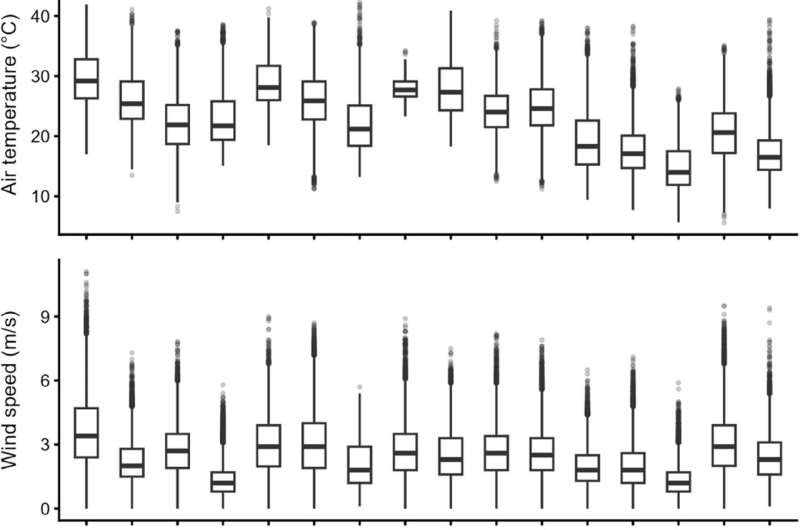Soccer players competing in the 2026 FIFA Men’s World Cup may be at risk of severe heat stress and dehydration, according to a study published in Scientific Reports. Ten of the 16 sites set to host the upcoming World Cup in North America could put competitors at risk of extreme heat stress, with the sites of highest risk located in Arlington and Houston (both in Texas, U.S.) and Monterrey in Mexico.
Past studies on former World Cup venues have highlighted the negative effects for soccer players playing in high relative humidities (Brazil, 2014) or at high air temperatures (Russia, 2018). The 2026 World Cup will take place between 11 June and 19 July across Canada, Mexico, and the United States, when summer temperatures across North America are nearing their peak.
Marek Konefał and colleagues used data from the Copernicus Climate Change Service to analyze temperatures across the host countries at locations near the World Cup stadiums. They created a reference environment mimicking the temperature, wind, and humidity observed at each of the 16 locations for July averages.
Values were adjusted for the Universal Thermal Climate Index (UTCI)—a measure of how the human body responds to the outdoor environment—to simulate the pitch conditions that soccer players would experience during a match.

Distribution of meteorological parameters in the vicinity of the 2026 FIFA World Cup venues from 11th June to 19th of July covering the years 2009–2023. © Scientific Reports (2024). DOI: 10.1038/s41598-024-77540-1
Stadiums in Arlington, Houston (U.S.), and Monterrey (Mexico) suggested average hourly UTCI values above 49.5°C, posing a high risk of extreme heat stress. The highest thermal stress was estimated to occur at all stadiums between 2pm and 5pm local time, except for Miami, Florida, which observed its highest UTCI values between 11am and midday. Temperatures exceeding 50°C —classified as extreme heat—were recorded at Arlington and Houston during the mid to late afternoon.
The dataset assumes that the stadiums are not air conditioned, which would reduce levels of water loss and heat stress in some scenarios. The authors recommend that match schedules at venues associated with extreme heat stress are adjusted to avoid exposing soccer players to potentially unsafe playing conditions.
More information:
Katarzyna Lindner-Cendrowska et al, Prospective heat stress risk assessment for professional soccer players in the context of the 2026 FIFA World Cup, Scientific Reports (2024). DOI: 10.1038/s41598-024-77540-1
Provided by
Nature Publishing Group
Citation:
2026 World Cup sites pose heat stress risk for soccer players, study warns (2024, November 29)



